The Historic Story of Sverd I Fjell, The Majestic Swords In Stone
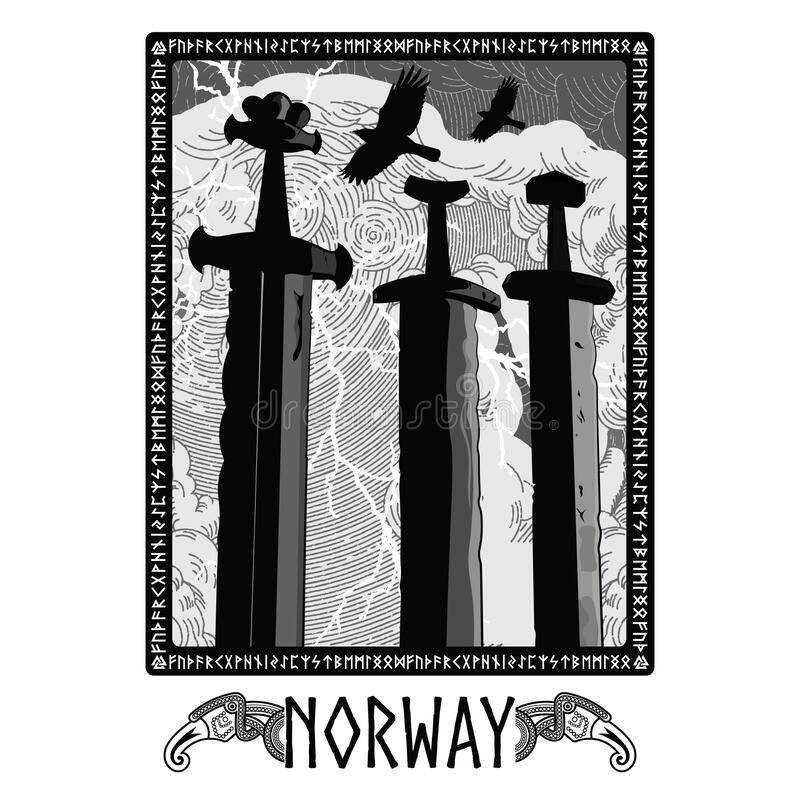 |
| Photo: Dreamstime |
The Sverd I Fjell are giant swords in stone located in Hafrsfjord, a suburb of the city of Stavanger in Norway. It is an prominent monument created be the Norwegian sculptor Fritz Røed, in commemoration of the Battle of Hafrsfjord in 872, when the Viking King Harald Hårfagre unified Norway for the first time under one crown.
Sverd i fjell is a monument to commemorate the battle in Hafrsfjord. The monument is on a tiny mountain in the area where perhaps the battle took place. Nobody knows. The fjord is widest here and the Vikings placed their boats side by side when they were fighting.
By Hafrsfjord, the monument Sverd i fjell (Swords in rock). This was where Harald Fairhair gathered Norway into one kingdom in 872. The monument consists of three swords that are fixed into the grown. They symbolise peace, unity and freedom. The hilts of the Viking swords are taken from swords found in different parts of the country. The monument is made by Fritz Røed (1928-2002), and was unveiled by King Olav in 1983.
History of the battle of Hafrsfjord
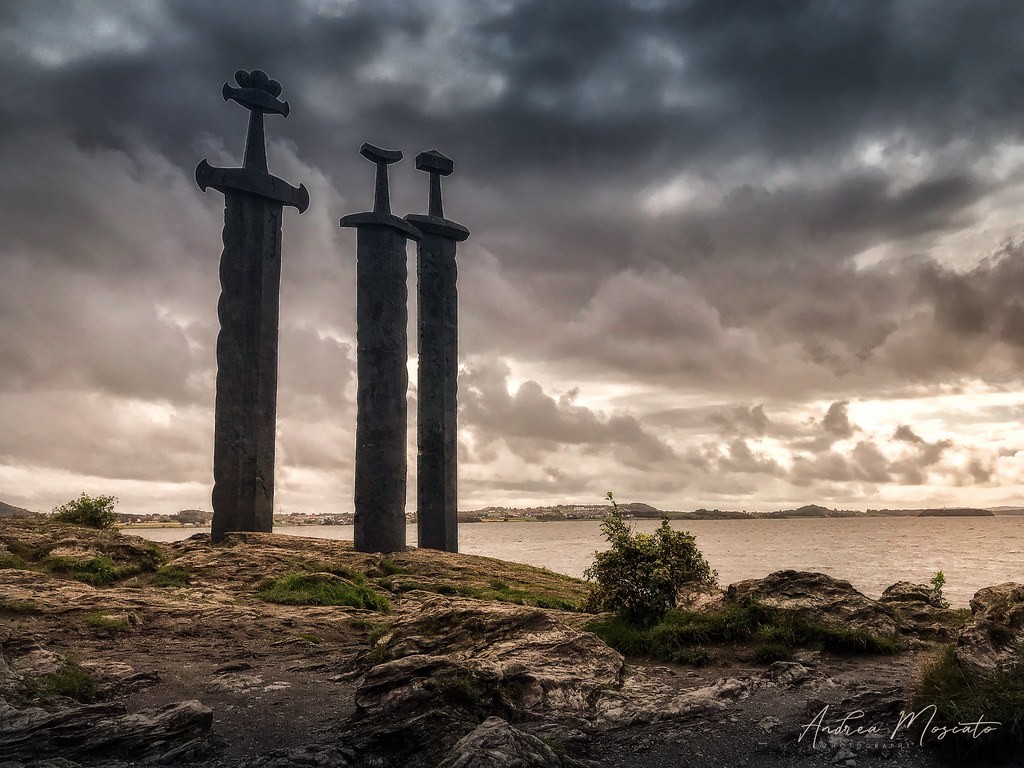 |
| Photo: Andrea Mocasto |
The battle of Hafrsfjord has been described in the Saga of Harald Fairhair in Snorre Sturlason’s Heimskringla (the best known of the Old Norse kings’ sagas), and it is considered to be the most important battle that contributed to the gathering of West Norway and Norway into one country. Back then, Norway was run by several kings, and the battle was between Harald Fairhair and these other kings. The dating of the battle to 872 is not confirmed, and could just as easily have happened in the 880s. In Hafrsfjord, divers have long searched for possible remains from the battle, however nothing has been found so far. There are still strong indications that the battle took place in Hafrsfjord.
Fun fact about Harald Fairhair
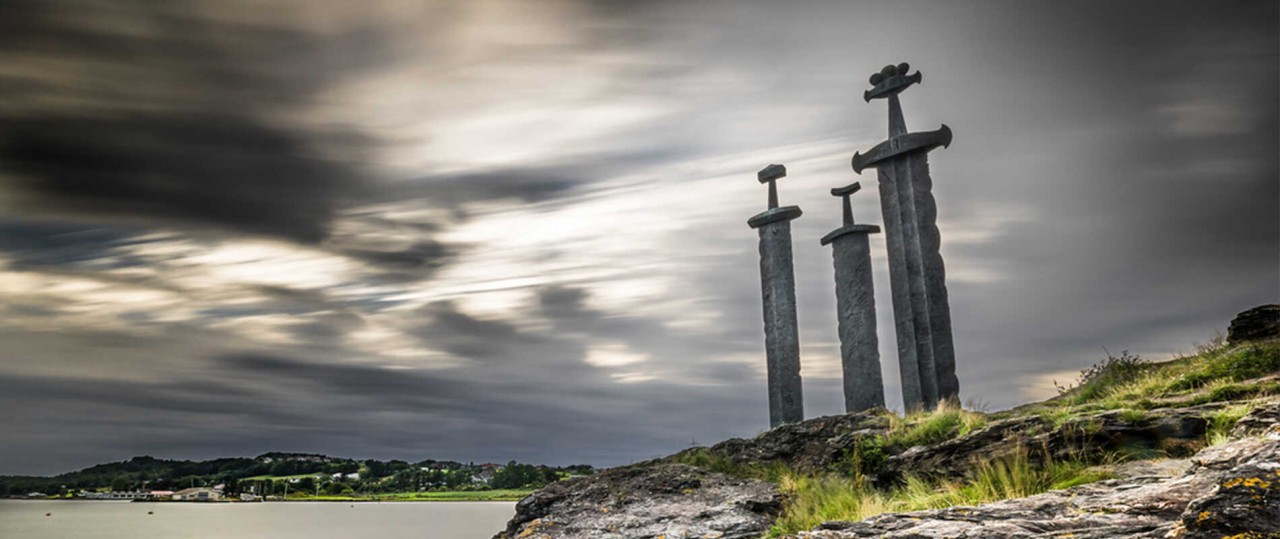 |
| Photo: MyBestPlace |
The love saga of Gyda and Harald Fairhair - according to the legend, as retold in the saga of Harald Fairhair, the reason he had for gathering Norway into one kingdom was allegedly that he desired to wed Gyda Eiriksdatter. Harald was in love with Gyda, the daughter of a king, and when he sent her men for her, she refused to come with them, because she did not find him sufficiently powerful. If he managed to be the sovereign of entire Norway, she would have him. According to the saga, Harald Fairhair rose to the challenge, and he promised not to cut his hair before he had accomplished to unite Norway into one kingdom. The rest, is as they say - history.
Hafrsfjord and Møllebukta
Hafrsfjord is located in both Stavanger and Sola municipalities. The fjord is around 9 kilometres long, and is a so-called threshold fjord. It has four thresholds, and is deepest by the end of the fjord, which is only 3,5 metres deep. This means that deep running boats cannot sail into the Hafrsfjord. You can cross the fjord in north over the Hafrsfjord bridge, or you must drive around. If you arrive by plane to Stavanger International Airport, Sola, you often fly over the Hafrsfjord before landing. It is believed to have lived people here in this area long before the battle in 872. A petroglyph site has been found stemming from the Bronze Age, around 1800-500 BC. at Fluberget in Hestnes, and they have also discovered some bronze lurs in Revheimsmyra just nearby. The entire area around Hafrsfjord is rich in prehistoric artefacts.
Hiking/recreational area/bathing
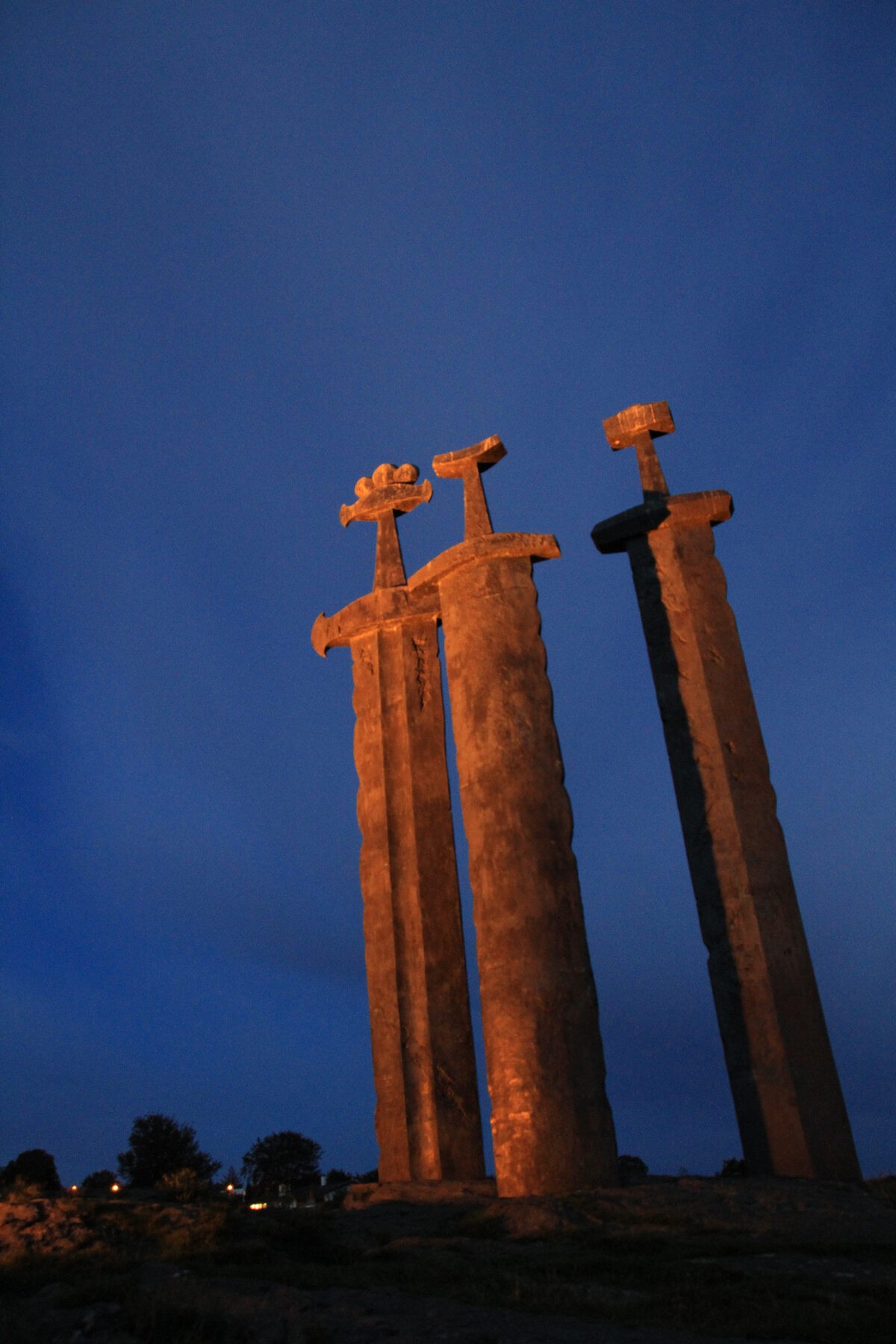 |
| STEN DUELAND ON FLICKR |
Hafrsjord is a popular recreational area all year round. There is a lovely bike route and walking path along the fjord. During summer, Møllebukta in Hafrsfjord is a warm and cosy bathing area for the entire family. A large area of grass lawns, natural soil and beach. A stream from the lake Store Stokkavatn runs through the bathing area. A new and large parking place with access from Regimentveien was inaugurated in the Autumn 2020. There is a designated area for sailing boards. The popular hiking area Sørmarka is found not far away.
Popular culture
The monument was featured in the 2005 documentary, Metal: A Headbanger's Journey, when Sam Dunn traveled to Norway to document on Norwegian black metal.
The monument also gives its name to the closing track on the Leaves' Eyes album King of Kings.
The monument cameos in the animated television series Steven Universe with the location known as the Gem Battlefield being loosely based on the concept and location of Sverd i fjell.
The monument is featured in German painter Werner Büttner's 2012 painting Kriegergroupies.
The monument also features as the symbol of Norway in Duolingo's Norwegian language programme.
About Stavanger
Stavanger's modern-day wealth was founded on oil but you certainly wouldn't know this to look at it: cobbled streets, a pretty harbour and some of the most beautiful scenery in Norway belie its petroleum pedigree.
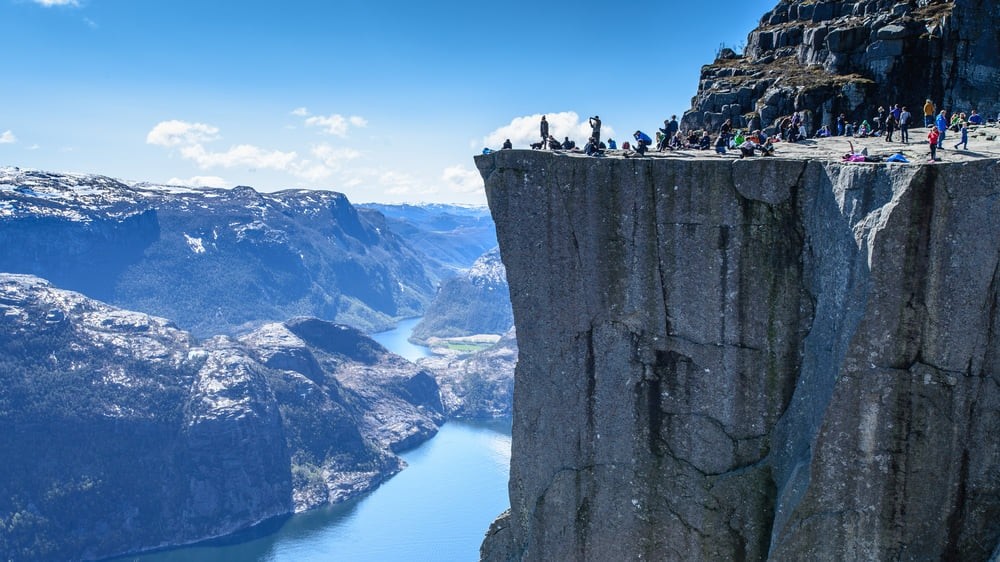 |
| Photo: Shutterstock |
Only the high prices and the Norwegian Petroleum Museum betray the city's now declining reliance on the oil sector, but they're not why tourists visit.
What Stavanger does best is nature, and the mighty Månafossen Falls and iconic Pulpit Rock (a towering hunk of granite overlooking the stunning Lysefjord) are just a short drive away. While most prefer to climb Pulpit themselves, there's a bus available for those who would rather spare their legs the effort.
As dramatic as the surrounding landscape is, there's much to be found in the city itself. Arranged around the harbour, the quaint city centre is an oasis of traditional stave churches, higgledy-piggledy houses and some seriously upmarket boutiques. Dominating the scene is the magnificent 13th-century Stavanger Cathedral whose towering spires are the city's main landmark.
There's no shortage of museums and galleries either. The Petroleum Museum, while sounding deeply dull, is actually rather interesting thanks to a series of interactive displays that get to the heart of what oil is and why it only exists in certain areas. Then there's the Canning Museum which, along with an impressively large collection of vintage tins, whisks you through the history of the city's sardine fishing industry. It too is more fascinating than it sounds.
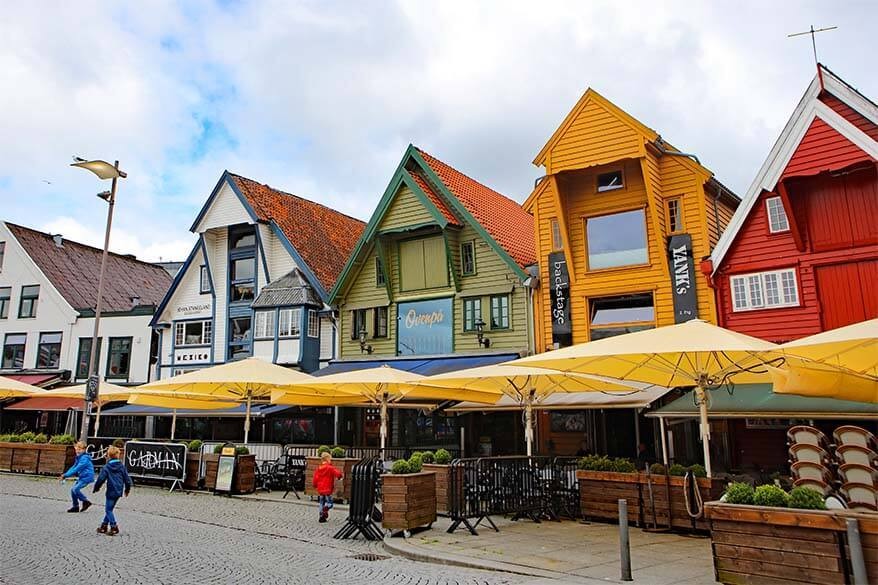 |
| Photo: Full Suitcase |
Of course, thanks to oil, sardines barely get a look in anymore, apart from on toast or slow cooked in butter at one of the city's many excellent restaurants. That doesn't mean, however, you won't see fishermen hauling them in on one of the beautiful golden sand beaches dotted in and around the city. But that's Stavanger for you: part urban, part natural, all beautiful.
 | Top 10 Most Beautiful and Must-Visit Caves In The World Caves are the creation of nature, charming any tourists with their mysterious and an air of danger, waiting for humans to explore the deepest secrets ... |
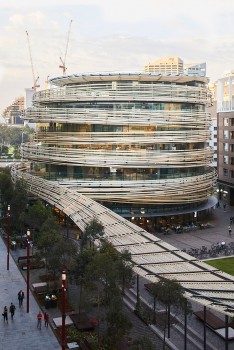 | Sydney: The Stunning “Exchange” Building Wrapped By Irregular Wooden Threads The Exchange building, one of the famous Japanese architecture Kengo Kuma and is wrapped by irregularly-arranged wooden threads to create softness on the building, has ... |
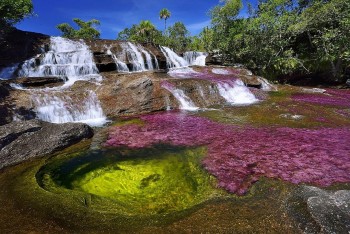 | Unusual And Amazing Experiences You Can Have in Colombia Stepping into Colombia, tourists will be able to have some of the best, unusual and amazing experiences in this beautiful, historical city. |
Recommended
 Travel
Travel
Vietnam Through Australian Eyes: Land of Flavor, Warmth, and Timeless Charm
 Travel
Travel
Strategies for Sustainable Growth of Vietnam’s Tourism from International Markets
 Travel
Travel
Vietnam Strengthens Its Presence On The Global Tourism Map
 Multimedia
Multimedia
Phong Nha-Ke Bang National Park Named Top Adventure Travel Site
Popular article
 Travel
Travel
Vietnam Welcomes Record-High Number of International Visitors
 Travel
Travel
Luxury Train From Hanoi To Hai Phong To Be Launched In May
 Travel
Travel
Phong Nha Named Top Budget-Friendly Travel Destination for Spring 2025: Agoda
 Travel
Travel







